21 reasons you should drop everything and move to Phnom Penh
It just might be the greatest place in the world to live.
Global Post | 5 May 2014
1. Motodops know everything
 (SHANKAR S./Flickr Commons)
(SHANKAR S./Flickr Commons)
Granted this one cuts both ways. But when you’re in a
pickle, you can count on a motodop — what Cambodians call motorbike taxi
drivers — to find you what you need, be it someone’s office or a
particular kind of mango. These guys (they’re almost all men) know every
in and out of the city. Of course, you can also count on them to be
waiting for you somewhere you hadn't mentioned going. They just knew you
were there.
2. Hammocks are everywhere and, coincidentally, so is nap time
 (Bo Nielsen/Flickr Commons)
(Bo Nielsen/Flickr Commons)
There’s really nothing better than stringing up a hammock
between two posts, or a post and a tree, and taking a snooze in the
shade. That must be why Cambodians and foreigners alike do it all the
time.
3. Two hour lunches
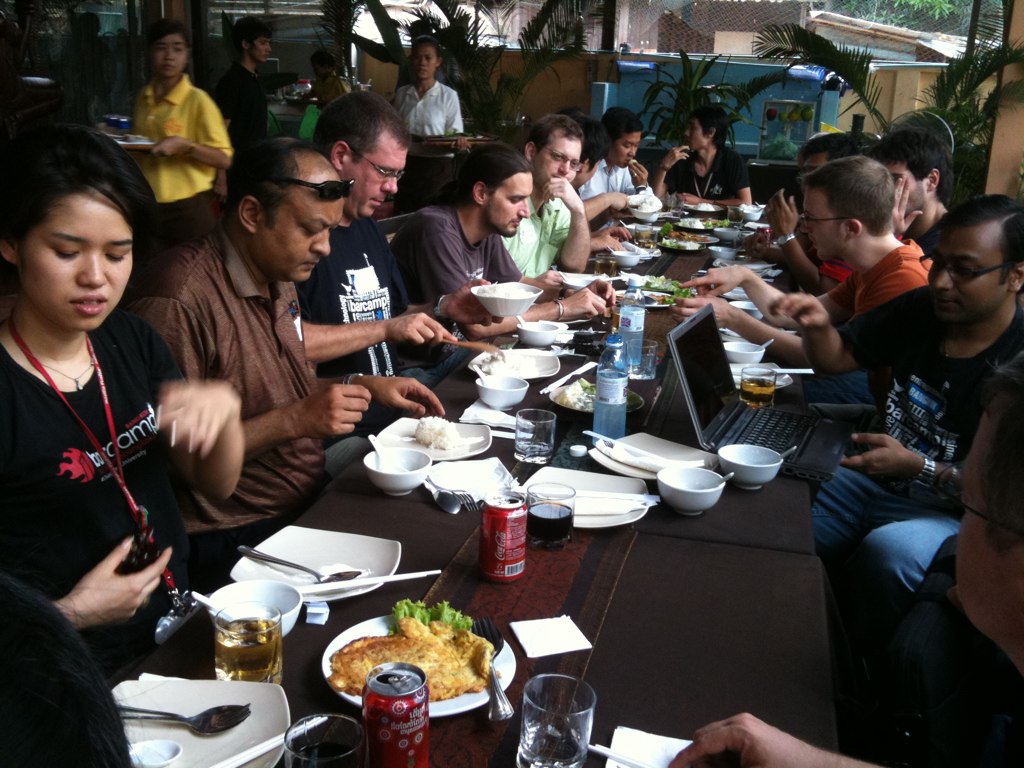 (Yosomono/Flickr Commons)
(Yosomono/Flickr Commons)
It’s like a mandatory break that really allows you to do
something and also eat your lunch. Many people eat and then snooze.
Others hit the gym and then eat. And if you’re tempted to work through
lunch, well good luck getting any business done. People really take
their two hours across the board. Phones will keep ringing, so you might
as well not be the one calling.
4. Cheapest massage ever
 (Omar Havana/Getty Images)
(Omar Havana/Getty Images)
This really goes for any spa treatment, but perhaps the most
pervasive is the massage. You can get a solid one for under $10 if you
know where to look.
5. So many holidays
 (Chris Lewis/Flickr Commons)
(Chris Lewis/Flickr Commons)
Cambodia has a ridiculous amount of national holidays.
Wikipedia lists 18 [try 24 officials one], though that seems modest. What really makes them
special is that there is an unwritten policy allowing folks to take off a
couple days before and a couple days after each holiday, just cuz. It’s
not uncommon to call someone the week before Khmer New Year in April
and find they’re not there because “next week is Khmer New Year.”
6. Monsoons that remind you nature is more powerful than people
 (Andrea Hale/Flickr Commons)
(Andrea Hale/Flickr Commons)
Another that cuts both ways, but if you have the right
shelter to watch a storm. Just. Wow. It will take your breath away.
During rainy season, which lasts from May until September, climate
change not withstanding, they can be quite predictable. A cloud the size
of a continent slides over the sky and the heavens open, it seems, for
about an hour or so of violent downpour. Then, due to Cambodia’s intense
heat, most of it burns right off afterwards. Unless, of course, it
floods.
7. Free meditation at Wat Lanka
 (Pigalle/Flickr Commons)
(Pigalle/Flickr Commons)
Cambodia is a Buddhist country, and while it doesn’t quite
have the veil of holiness that Luang Prabang in Laos does, there are
still many Buddhist temples, or wats. Wat Lanka in the center of Phnom
Penh offers free meditation once a week and a monk there will happily
walk you through the basics and provide you with some free introductory
literature.
8. The best iced coffee you'll ever drink comes in a plastic bag for 50 cents
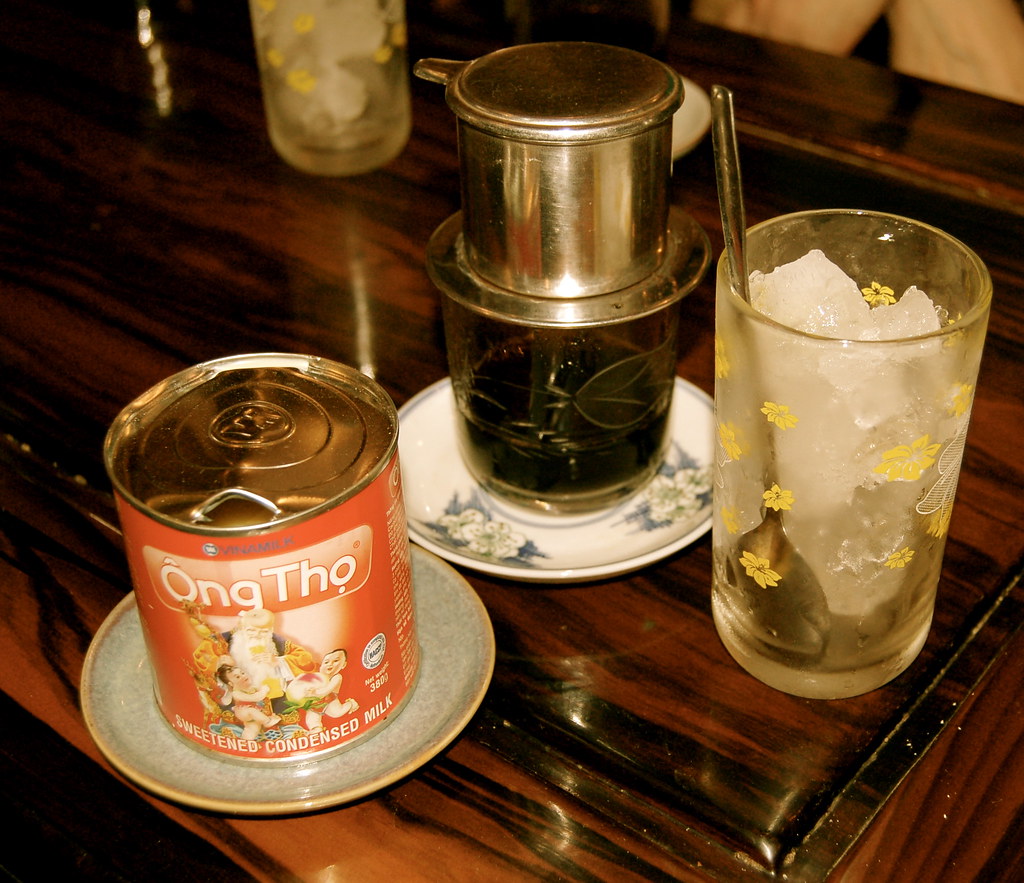 (Dominque Bergeron/Flickr Commons)
(Dominque Bergeron/Flickr Commons)
Need we say more?
9. Fresh coconut vendors
 (Tang Chhin Sothy/AFP/Getty Images)
(Tang Chhin Sothy/AFP/Getty Images)
One of the benefits of it being absurdly hot a lot of the
time, and water being more precious than it is in the West, is that
people have figured out alternative ways to hydrate. Streetside vendors
have piles of fresh coconuts and will take a machete to cut you the
perfect drinking hole on top for about $1. Yeah, it’s the same stuff
that costs $3 in the United States, but you get four times as much.
10. Vann Molyvann’s architecture is still found all over town
 (RICHARD HOPKINS/Flickr Commons)
(RICHARD HOPKINS/Flickr Commons)
Before Cambodia fell to the Khmer Rouge in the mid-1970s,
Phnom Penh had a heyday. It was referred to as the “Pearl of Southeast Asia.”
Jackie Kennedy came and so did everyone else. The horrors that followed
destroyed a lot of what the capital looked like in the late 1960s, but
echoes remain. Vann Molyvann, who was once the country’s chief architect
and helped design Phnom Penh’s iconic Independence Monument, is
responsible for many buildings around town, some of which are still
there. Some have even been restored. His style is called New Khmer architecture,
which blends modern elements like reinforced concrete and assertive
structures with traditional Khmer attributes like raised floors and
fanned roofs.
11. There are spirit houses at every establishment
 (Jay Vidheecharoen/Flickr Commons)
(Jay Vidheecharoen/Flickr Commons)
There is a fair amount of animism mixed in with Buddhism in
Cambodia. Perhaps the most alive of the animist traditions is that of
the spirit house. Every home and office has a small, house-shaped shrine
that sits on a post or rock outside. Cambodians put offerings of fruit
and incense inside to appease the gods looking over their homes,
families and places of work.
12. Cruising the Tonle Sap
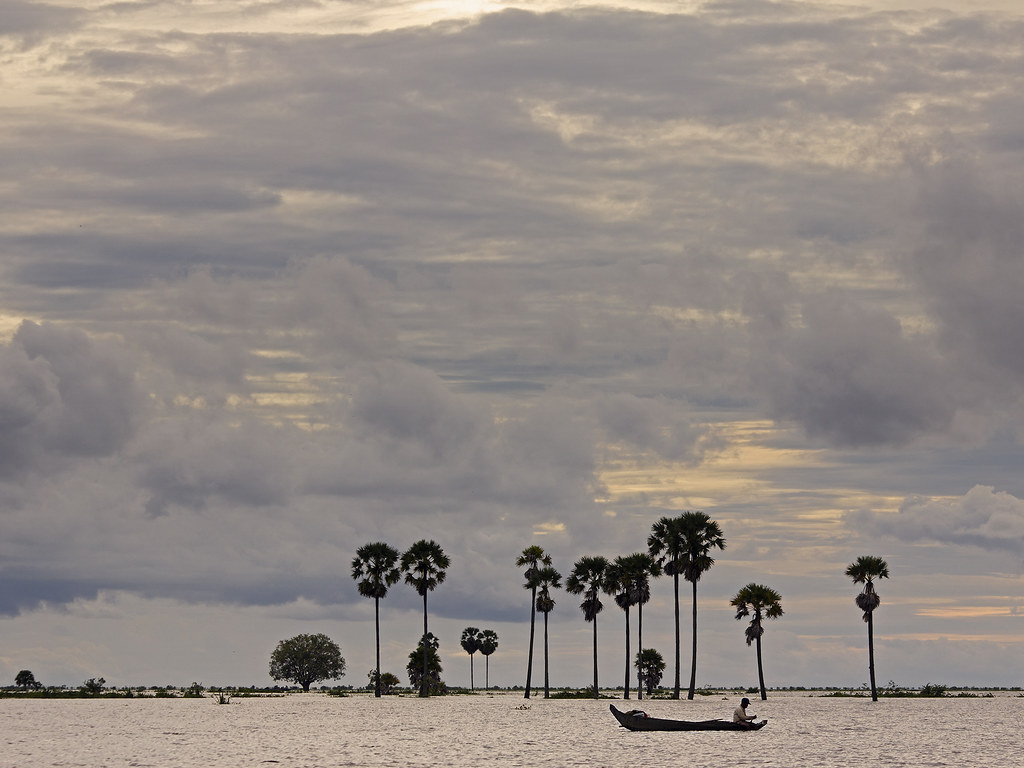 (PETER NIJENHUIS/Flickr Commons)
(PETER NIJENHUIS/Flickr Commons)
Phnom Penh is built at the confluence of four rivers, which
form the focal point of the city. One of these rivers is the Tonle Sap
(“tonle” is Khmer for “river”). A lovely way to spend a few hours,
particularly at sunset, is hiring a boat and taking a spin, with or
without beer.
13. Beer is cheaper than water
 (CRYSTIAN CRUZ/Flickr Commons)
(CRYSTIAN CRUZ/Flickr Commons)
Speaking of beer. This isn’t true everywhere and it isn’t
true for every beer, but it is definitely true in lots of places for
lots of beers. A can of Anchor can go for the equivalent of 50 cents,
while a bottle of water will be $1.
14. Plants grow like crazy and they don’t need any help
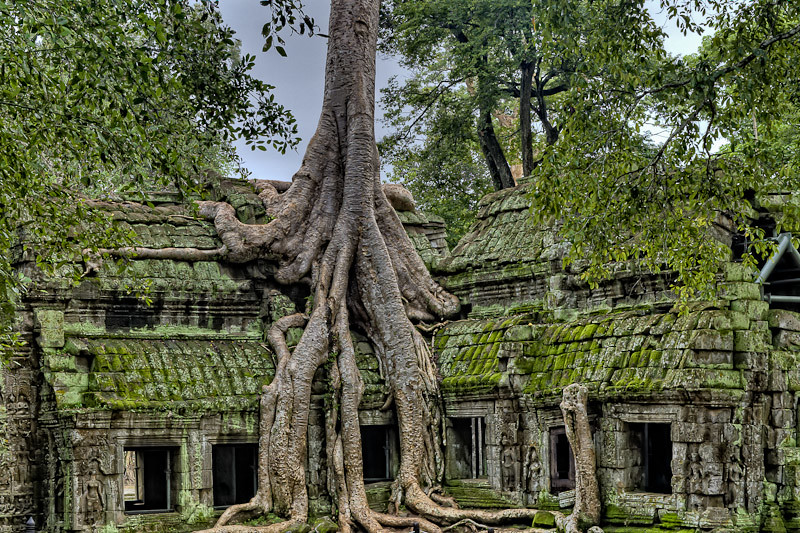 (James Wheeler/Flickr Commons)
(James Wheeler/Flickr Commons)
Having trouble growing orchids in New York? Birds of
paradise not really thriving in Boston? Your problems are solved in
tropical Cambodia. Things grow fast and all over the place. People say
it’s harder to kill a plant than keep it alive, which turns out to be
true in most cases.
15. Amok is delicious
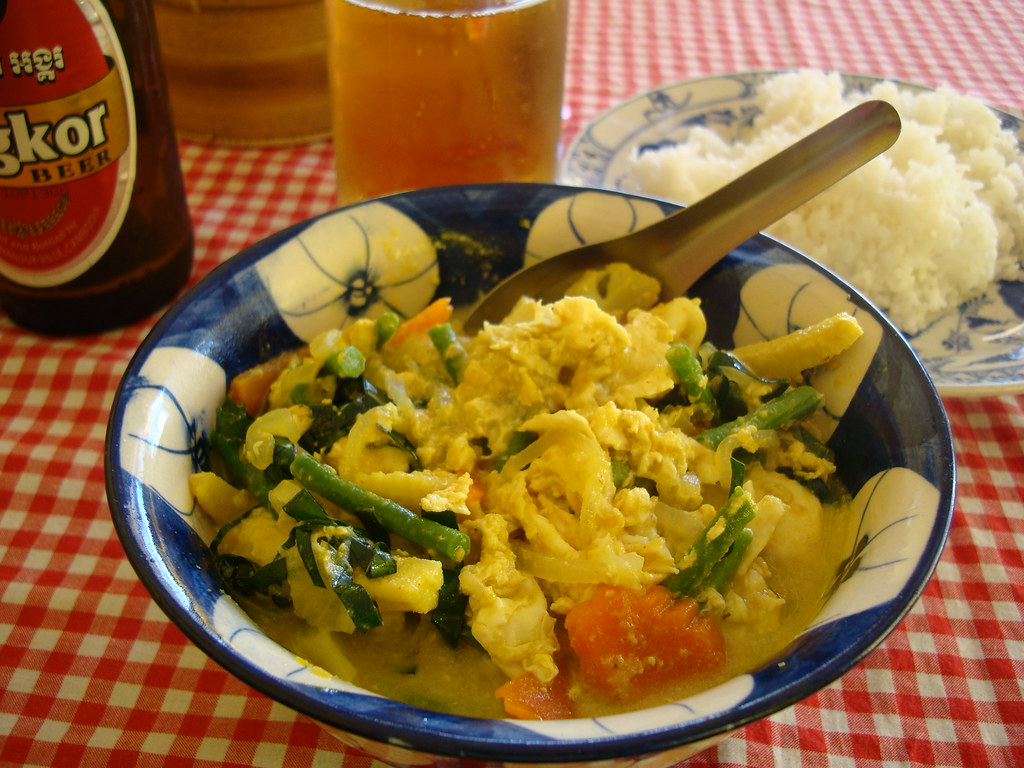 (Als Pictures/Flickr Commons)
(Als Pictures/Flickr Commons)
Are you a fan of curry? Then you will LOVE amok. It’s
Cambodia’s traditional dish and shares many of its ingredients with a
common red curry. But instead of a soup that's boiled like a curry, amok
is steamed. And there is a little egg yolk in there to help the curry
coat each piece of meat. Traditionally, it is served with a meaty
catfish, like the Mekong catfish, though really it’s delicious no matter
what you put in there. Also, its presentation is wonderful. It is
served in a little bowl made from a folded up banana leaf held together
with toothpicks and a dollop of coconut milk topped with a couple strips
of shredded chili pepper and/or kaffir lime leaf. Some people include
chopped peanuts but purists might get mad at you.
16. Every day is an adventure
 (Tang Chhin Sothy/AFP/Getty Images)
(Tang Chhin Sothy/AFP/Getty Images)
Cambodia is developing at a rapid-fire pace, but developing
all the same, and like most developing countries, all bets are off.
People make do with what’s in front of them.
17. DVDs for $1
 (Daniel Grosvenor/Flickr Commons)
(Daniel Grosvenor/Flickr Commons)
Anti-piracy arguments aside, it’s awesome to be able to get
pretty much every movie that has been released in mainstream America
(and lot that have been released elsewhere) for $1.
18. You can use US dollars
 (Akshay R/Flickr Commons)
(Akshay R/Flickr Commons)
When the UN moved into Cambodia post-civil war in the 1990s,
it dollarized the economy, which still holds. That means that the Khmer
riel is still used but really only for small purchases. American
dollars are the main currency. It’s pretty wild the first time you go to
the market and get your change from a small Cambodian grandmother in
the form of a bill with George Washington on it. Talk about worlds
colliding.
19. Getting out of the city is just as awesome as staying in it
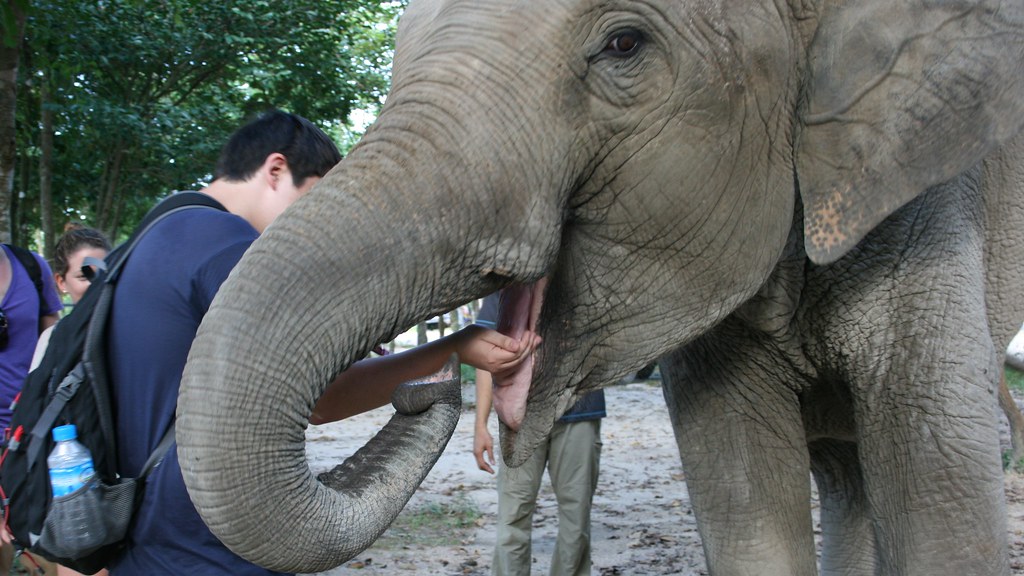 (James Antrobus/Flickr Commons)
(James Antrobus/Flickr Commons)
At about a million people, Phnom Penh is hardly the biggest
city out there, but still it’s nice to escape every once in a while.
There are many accessible day trips that range from the fun to the
educational. You might get to ride an elephant at Phnom Thmao Wildlife
Sanctuary, or take a tour of the Killing Fields and learn about
Cambodia’s sobering history.
20. The night life will surprise you
 (ZINSTRA/Flickr Commons)
(ZINSTRA/Flickr Commons)
No matter what you prefer, a casual chat in a beer garden or
a dance-your-pants-off evening with Khmer teenagers, there is something
for you.
21. You can get big apartments for cheap
 (Emily Lodish/GlobalPost)
(Emily Lodish/GlobalPost)
This varies from neighborhood to neighborhood. Riverside
apartments can get pricey, for sure. But if you’re a little flexible, a
couple hundred dollars can buy you a large space in a great
neighborhood.
http://www.globalpost.com/dispatch/news/culture-lifestyle/traveltourism/140414/21-reasons-phnom-penh-best-place-live
It just might be the greatest place in the world to live.
Global Post | 5 May 2014
Global Post | 5 May 2014
 (SHANKAR S./Flickr Commons)
(SHANKAR S./Flickr Commons)
Granted this one cuts both ways. But when you’re in a
pickle, you can count on a motodop — what Cambodians call motorbike taxi
drivers — to find you what you need, be it someone’s office or a
particular kind of mango. These guys (they’re almost all men) know every
in and out of the city. Of course, you can also count on them to be
waiting for you somewhere you hadn't mentioned going. They just knew you
were there.
2. Hammocks are everywhere and, coincidentally, so is nap time
 (Bo Nielsen/Flickr Commons)
(Bo Nielsen/Flickr Commons)
There’s really nothing better than stringing up a hammock
between two posts, or a post and a tree, and taking a snooze in the
shade. That must be why Cambodians and foreigners alike do it all the
time.
3. Two hour lunches
 (Yosomono/Flickr Commons)
(Yosomono/Flickr Commons)
It’s like a mandatory break that really allows you to do
something and also eat your lunch. Many people eat and then snooze.
Others hit the gym and then eat. And if you’re tempted to work through
lunch, well good luck getting any business done. People really take
their two hours across the board. Phones will keep ringing, so you might
as well not be the one calling.
4. Cheapest massage ever
 (Omar Havana/Getty Images)
(Omar Havana/Getty Images)
This really goes for any spa treatment, but perhaps the most
pervasive is the massage. You can get a solid one for under $10 if you
know where to look.
5. So many holidays
 (Chris Lewis/Flickr Commons)
(Chris Lewis/Flickr Commons)
Cambodia has a ridiculous amount of national holidays.
Wikipedia lists 18 [try 24 officials one], though that seems modest. What really makes them
special is that there is an unwritten policy allowing folks to take off a
couple days before and a couple days after each holiday, just cuz. It’s
not uncommon to call someone the week before Khmer New Year in April
and find they’re not there because “next week is Khmer New Year.”
6. Monsoons that remind you nature is more powerful than people
 (Andrea Hale/Flickr Commons)
(Andrea Hale/Flickr Commons)Another that cuts both ways, but if you have the right shelter to watch a storm. Just. Wow. It will take your breath away. During rainy season, which lasts from May until September, climate change not withstanding, they can be quite predictable. A cloud the size of a continent slides over the sky and the heavens open, it seems, for about an hour or so of violent downpour. Then, due to Cambodia’s intense heat, most of it burns right off afterwards. Unless, of course, it floods.
7. Free meditation at Wat Lanka
 (Pigalle/Flickr Commons)
(Pigalle/Flickr Commons)Cambodia is a Buddhist country, and while it doesn’t quite have the veil of holiness that Luang Prabang in Laos does, there are still many Buddhist temples, or wats. Wat Lanka in the center of Phnom Penh offers free meditation once a week and a monk there will happily walk you through the basics and provide you with some free introductory literature.
8. The best iced coffee you'll ever drink comes in a plastic bag for 50 cents
 (Dominque Bergeron/Flickr Commons)
(Dominque Bergeron/Flickr Commons)Need we say more?
9. Fresh coconut vendors
 (Tang Chhin Sothy/AFP/Getty Images)
(Tang Chhin Sothy/AFP/Getty Images)One of the benefits of it being absurdly hot a lot of the time, and water being more precious than it is in the West, is that people have figured out alternative ways to hydrate. Streetside vendors have piles of fresh coconuts and will take a machete to cut you the perfect drinking hole on top for about $1. Yeah, it’s the same stuff that costs $3 in the United States, but you get four times as much.
10. Vann Molyvann’s architecture is still found all over town
 (RICHARD HOPKINS/Flickr Commons)
(RICHARD HOPKINS/Flickr Commons)Before Cambodia fell to the Khmer Rouge in the mid-1970s, Phnom Penh had a heyday. It was referred to as the “Pearl of Southeast Asia.” Jackie Kennedy came and so did everyone else. The horrors that followed destroyed a lot of what the capital looked like in the late 1960s, but echoes remain. Vann Molyvann, who was once the country’s chief architect and helped design Phnom Penh’s iconic Independence Monument, is responsible for many buildings around town, some of which are still there. Some have even been restored. His style is called New Khmer architecture, which blends modern elements like reinforced concrete and assertive structures with traditional Khmer attributes like raised floors and fanned roofs.
11. There are spirit houses at every establishment
 (Jay Vidheecharoen/Flickr Commons)
(Jay Vidheecharoen/Flickr Commons)There is a fair amount of animism mixed in with Buddhism in Cambodia. Perhaps the most alive of the animist traditions is that of the spirit house. Every home and office has a small, house-shaped shrine that sits on a post or rock outside. Cambodians put offerings of fruit and incense inside to appease the gods looking over their homes, families and places of work.
12. Cruising the Tonle Sap
 (PETER NIJENHUIS/Flickr Commons)
(PETER NIJENHUIS/Flickr Commons)Phnom Penh is built at the confluence of four rivers, which form the focal point of the city. One of these rivers is the Tonle Sap (“tonle” is Khmer for “river”). A lovely way to spend a few hours, particularly at sunset, is hiring a boat and taking a spin, with or without beer.
13. Beer is cheaper than water
 (CRYSTIAN CRUZ/Flickr Commons)
(CRYSTIAN CRUZ/Flickr Commons)Speaking of beer. This isn’t true everywhere and it isn’t true for every beer, but it is definitely true in lots of places for lots of beers. A can of Anchor can go for the equivalent of 50 cents, while a bottle of water will be $1.
14. Plants grow like crazy and they don’t need any help
 (James Wheeler/Flickr Commons)
(James Wheeler/Flickr Commons)Having trouble growing orchids in New York? Birds of paradise not really thriving in Boston? Your problems are solved in tropical Cambodia. Things grow fast and all over the place. People say it’s harder to kill a plant than keep it alive, which turns out to be true in most cases.
15. Amok is delicious
 (Als Pictures/Flickr Commons)
(Als Pictures/Flickr Commons)Are you a fan of curry? Then you will LOVE amok. It’s Cambodia’s traditional dish and shares many of its ingredients with a common red curry. But instead of a soup that's boiled like a curry, amok is steamed. And there is a little egg yolk in there to help the curry coat each piece of meat. Traditionally, it is served with a meaty catfish, like the Mekong catfish, though really it’s delicious no matter what you put in there. Also, its presentation is wonderful. It is served in a little bowl made from a folded up banana leaf held together with toothpicks and a dollop of coconut milk topped with a couple strips of shredded chili pepper and/or kaffir lime leaf. Some people include chopped peanuts but purists might get mad at you.
16. Every day is an adventure
 (Tang Chhin Sothy/AFP/Getty Images)
(Tang Chhin Sothy/AFP/Getty Images)Cambodia is developing at a rapid-fire pace, but developing all the same, and like most developing countries, all bets are off. People make do with what’s in front of them.
17. DVDs for $1
 (Daniel Grosvenor/Flickr Commons)
(Daniel Grosvenor/Flickr Commons)Anti-piracy arguments aside, it’s awesome to be able to get pretty much every movie that has been released in mainstream America (and lot that have been released elsewhere) for $1.
18. You can use US dollars
 (Akshay R/Flickr Commons)
(Akshay R/Flickr Commons)When the UN moved into Cambodia post-civil war in the 1990s, it dollarized the economy, which still holds. That means that the Khmer riel is still used but really only for small purchases. American dollars are the main currency. It’s pretty wild the first time you go to the market and get your change from a small Cambodian grandmother in the form of a bill with George Washington on it. Talk about worlds colliding.
19. Getting out of the city is just as awesome as staying in it
 (James Antrobus/Flickr Commons)
(James Antrobus/Flickr Commons)At about a million people, Phnom Penh is hardly the biggest city out there, but still it’s nice to escape every once in a while. There are many accessible day trips that range from the fun to the educational. You might get to ride an elephant at Phnom Thmao Wildlife Sanctuary, or take a tour of the Killing Fields and learn about Cambodia’s sobering history.
20. The night life will surprise you
 (ZINSTRA/Flickr Commons)
(ZINSTRA/Flickr Commons)No matter what you prefer, a casual chat in a beer garden or a dance-your-pants-off evening with Khmer teenagers, there is something for you.
21. You can get big apartments for cheap
 (Emily Lodish/GlobalPost)
(Emily Lodish/GlobalPost)This varies from neighborhood to neighborhood. Riverside apartments can get pricey, for sure. But if you’re a little flexible, a couple hundred dollars can buy you a large space in a great neighborhood.
http://www.globalpost.com/dispatch/news/culture-lifestyle/traveltourism/140414/21-reasons-phnom-penh-best-place-live


No comments:
Post a Comment